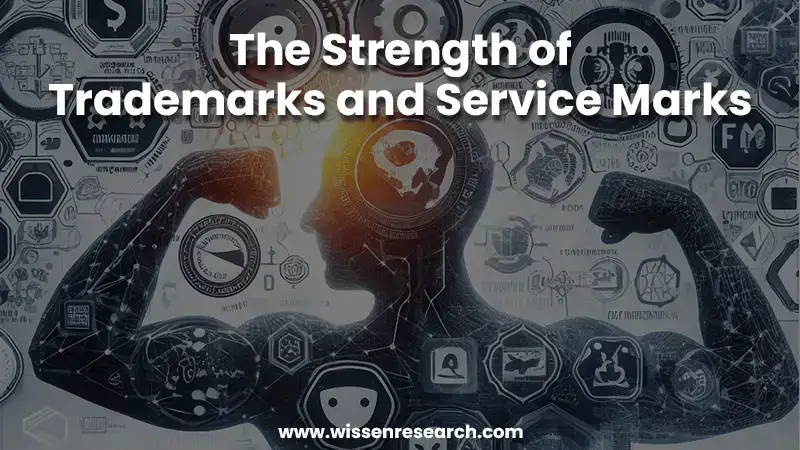
In the competitive landscape of the business world, a strong and recognizable brand is often a company’s most valuable asset. Trademarks and service marks play a crucial role in establishing and protecting these brands. These symbols, names, and slogans not only identify a business but also represent its reputation, quality, and goodwill.
In this article, we’ll explore the significance of trademarks and service marks and how they contribute to a company’s brand strength and resilience.
Defining Trademarks and Service Marks
Trademarks and service marks serve different purposes, but they both help establish a business’s identity and protect its reputation.
They help consumers easily identify and distinguish one company’s products from another’s.
Well-known examples include the Apple logo, the Nike swoosh, and the Coca-Cola name.
Examples include FedEx for shipping services, McDonald’s for fast food services, and Google for online search services.
Trademarks are classified into several distinctiveness categories based on their level of distinctiveness, which indicates how easily they can be recognized and protected under trademark law.
The distinctiveness categories, in ascending order of distinctiveness, are as follows:
1. Generic Trademarks: Generic terms are the least distinctive and are typically the common names for the goods or services they represent.
These terms are usually ineligible for trademark protection because they describe the product or service itself, such as “computer” for computers or “shoe” for shoes.
The primary purpose of trademark law is to protect marks that distinguish one source of goods or services from another, and generic terms fail to fulfill this requirement.
2. Descriptive Trademarks: Descriptive marks describe some aspect or characteristic of the goods or services they identify.
These marks are usually not inherently distinctive and may only receive trademark protection if they have acquired secondary meaning, which means consumers associate the mark with a specific source of goods or services.
For example, “Fast & Fresh” for a restaurant might be considered descriptive, but if consumers associate it with a specific restaurant chain, it could become protectable.
3. Suggestive Trademarks: Suggestive marks are more distinctive than descriptive marks but still require consumers to make a mental leap to connect the mark with the associated goods or services.
These marks indirectly suggest qualities, characteristics, or attributes of the products or services without describing them outright.
For example, “Netflix” for an online streaming service. While it suggests fast internet and movies (net + flicks), it does not explicitly describe the service.
4. Arbitrary Trademarks: Arbitrary marks consist of words or symbols that have a common meaning but are used in a way that has no relation to the product or service they identify.
They are inherently distinctive and typically receive strong trademark protection.
For example, “Apple” for computers and electronic devices.
5. Fanciful Trademarks: Fanciful marks are the most distinctive category of trademarks because they are completely made up and have no inherent meaning.
These marks are inherently strong and receive the broadest protection under trademark law.
For example, “Xerox” for photocopiers and “Kodak” for photography equipment.
It’s important for businesses to understand the distinctiveness of their proposed trademarks when seeking trademark protection. While fanciful and arbitrary marks are the most protectable and desirable, descriptive marks can become protectable with time and brand recognition (secondary meaning). When choosing a trademark, businesses should consider the balance between the mark’s distinctiveness and its ability to convey the desired message to consumers.
Additionally, businesses should conduct thorough trademark searches and consult with trademark attorneys to ensure that their chosen mark is both available and protectable under the law.
Examples of Successful Trademarks and Service Marks
Apple: The iconic Apple logo is a symbol of innovation and quality, instantly recognized worldwide.
McDonald’s: The golden arches and the “I’m lovin‘ it” slogan are synonymous with fast food and quick service.
Coca-Cola: The Coca-Cola name and script font are universally associated with refreshing carbonated beverages.
Nike: The swoosh symbolizes sportswear and athleticism, making it one of the most recognized logos in the world.
Conclusion
The strength of trademarks and service marks cannot be overstated in today’s competitive business environment. These symbols and names serve as the face of a brand, conveying its reputation, quality, and trustworthiness to consumers. Businesses that invest in building strong trademarks and service marks enjoy a competitive advantage, legal protection, and the potential for global expansion. As such, it is crucial for companies to recognize the value of these assets and protect them diligently, as they are integral to brand resilience and long-term success.
© Copyright 2024 – Wissen Research All Rights Reserved.